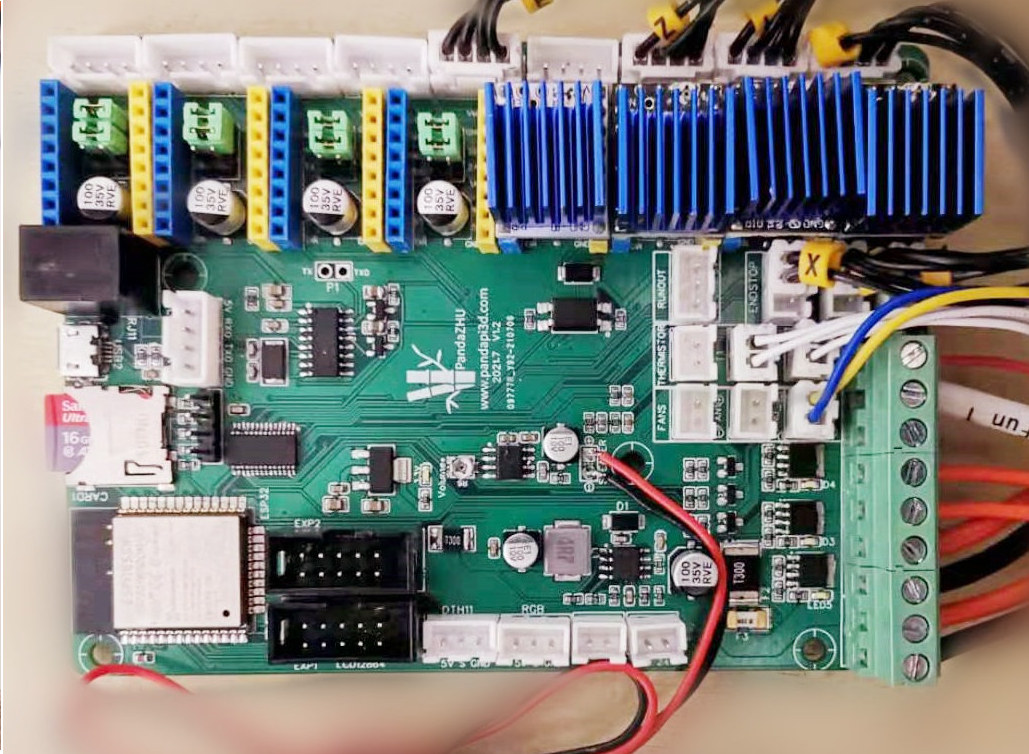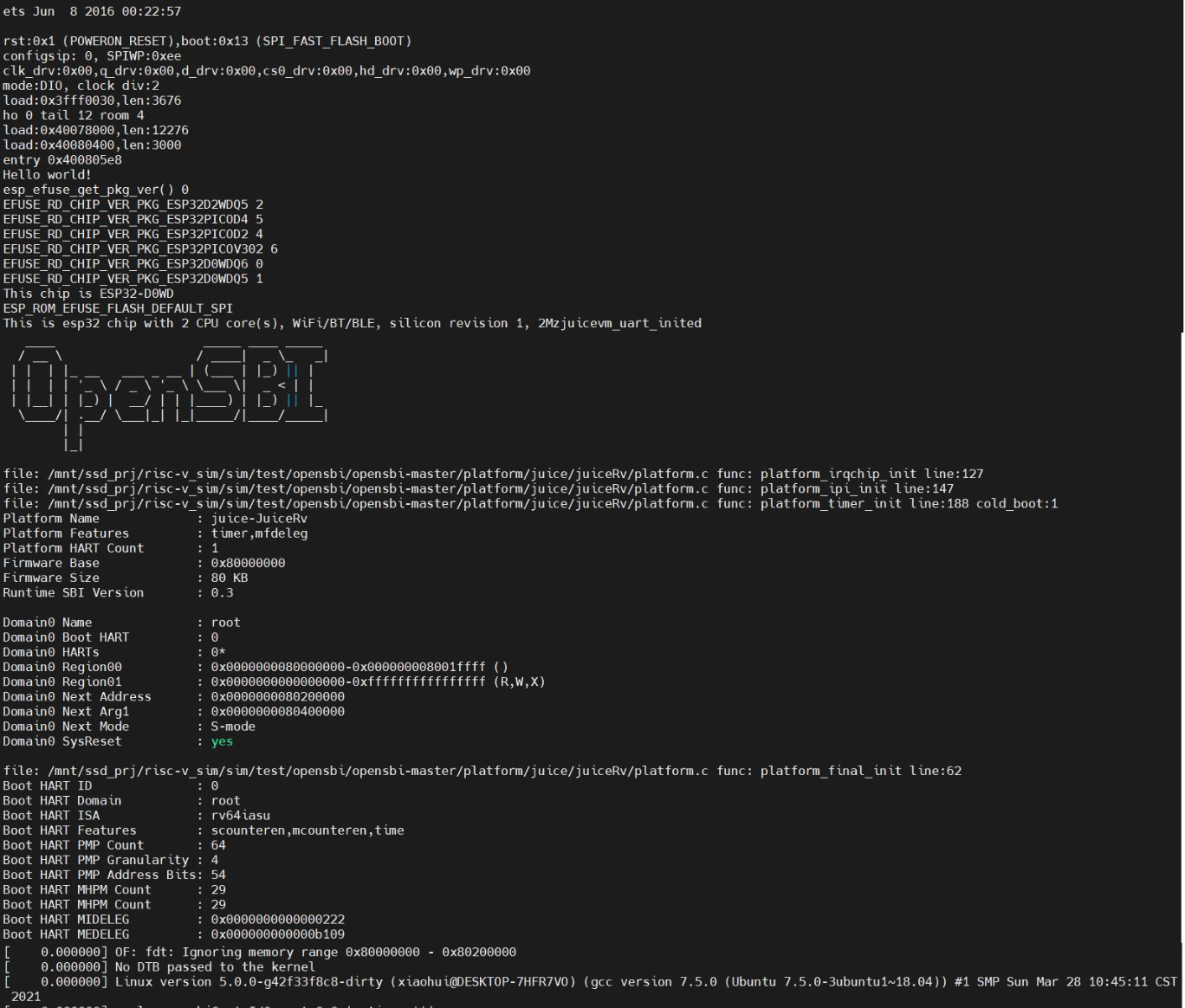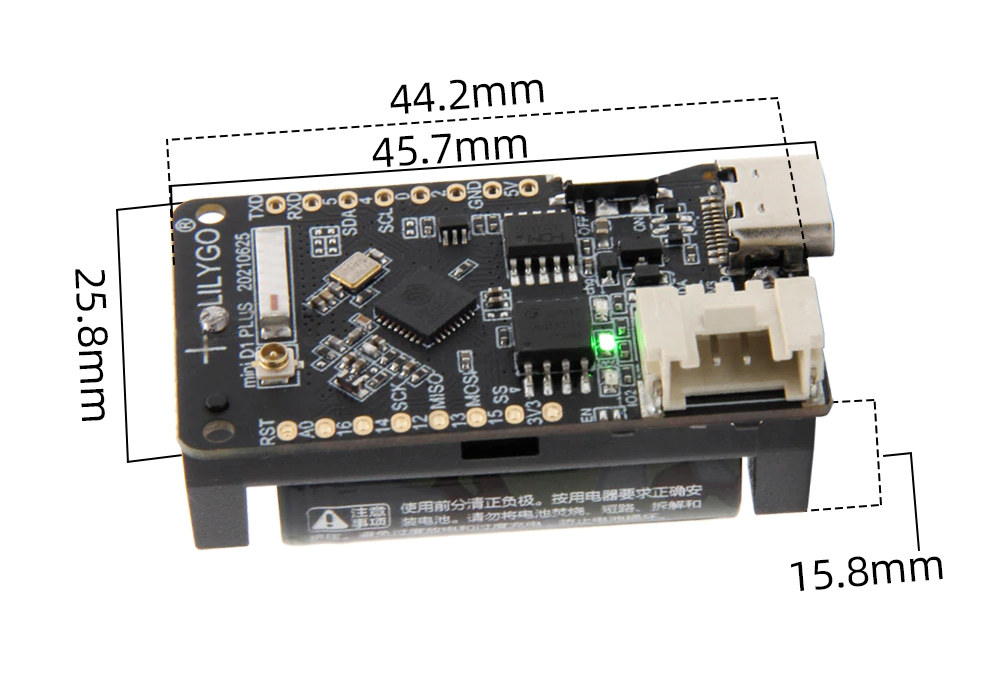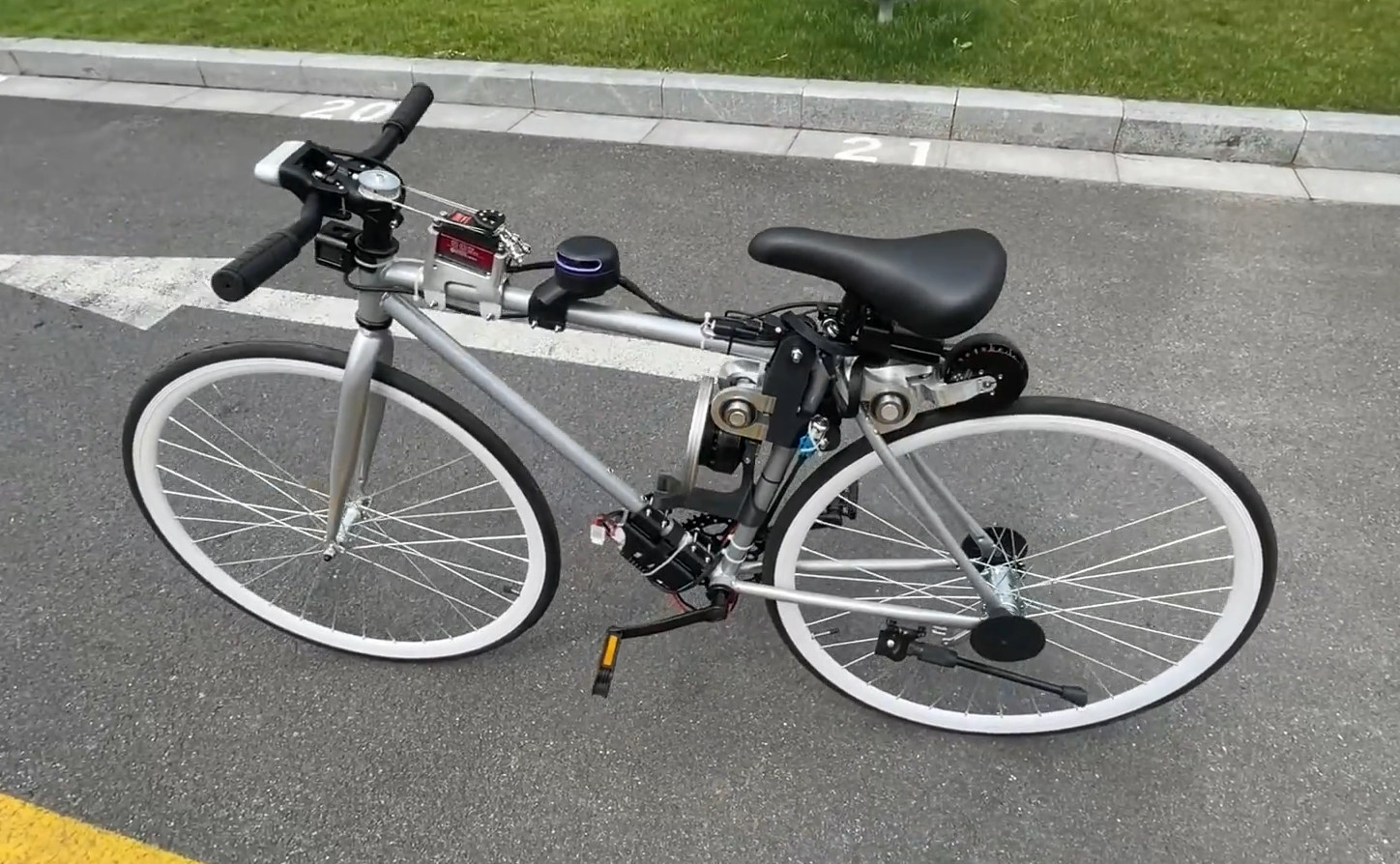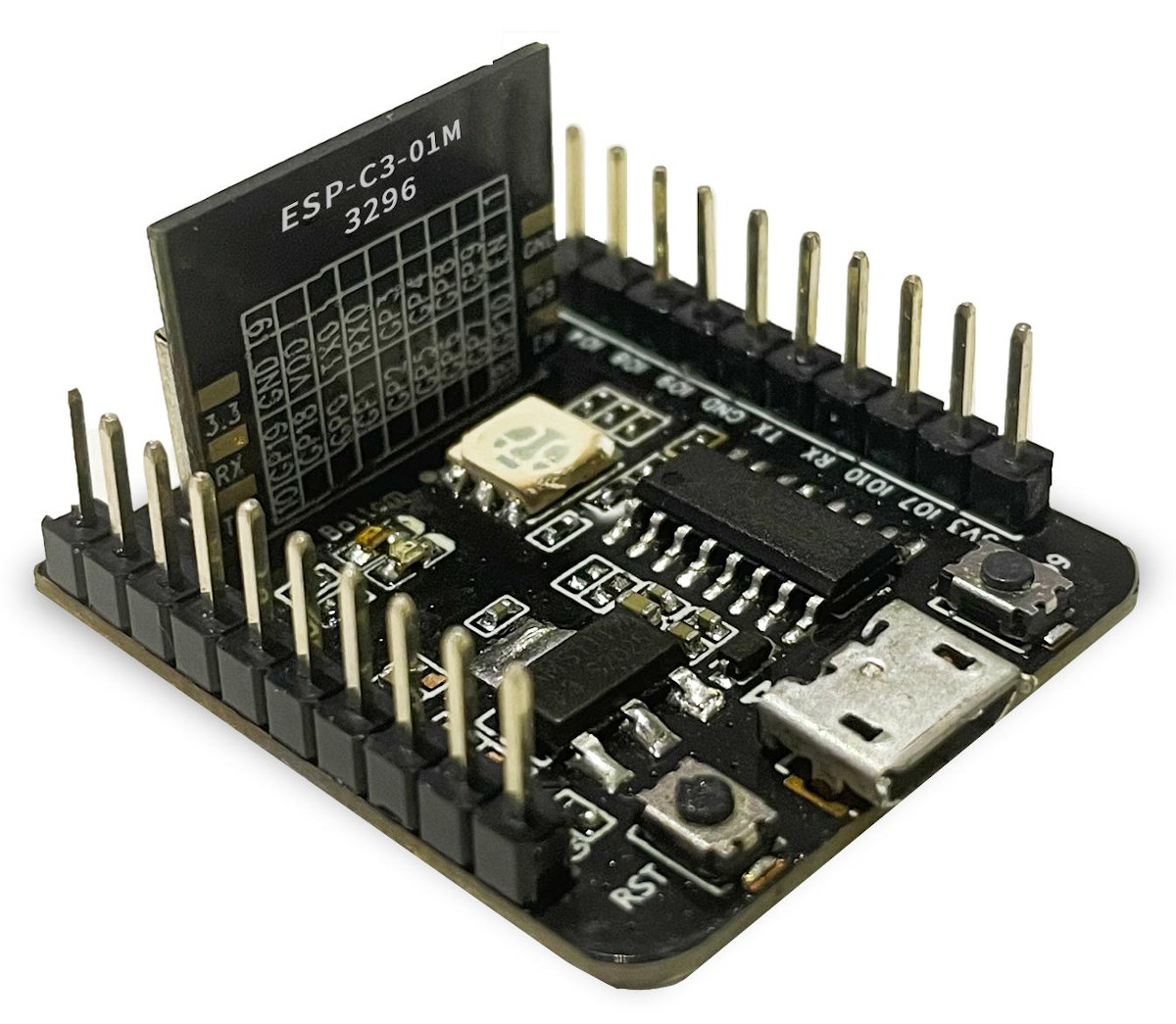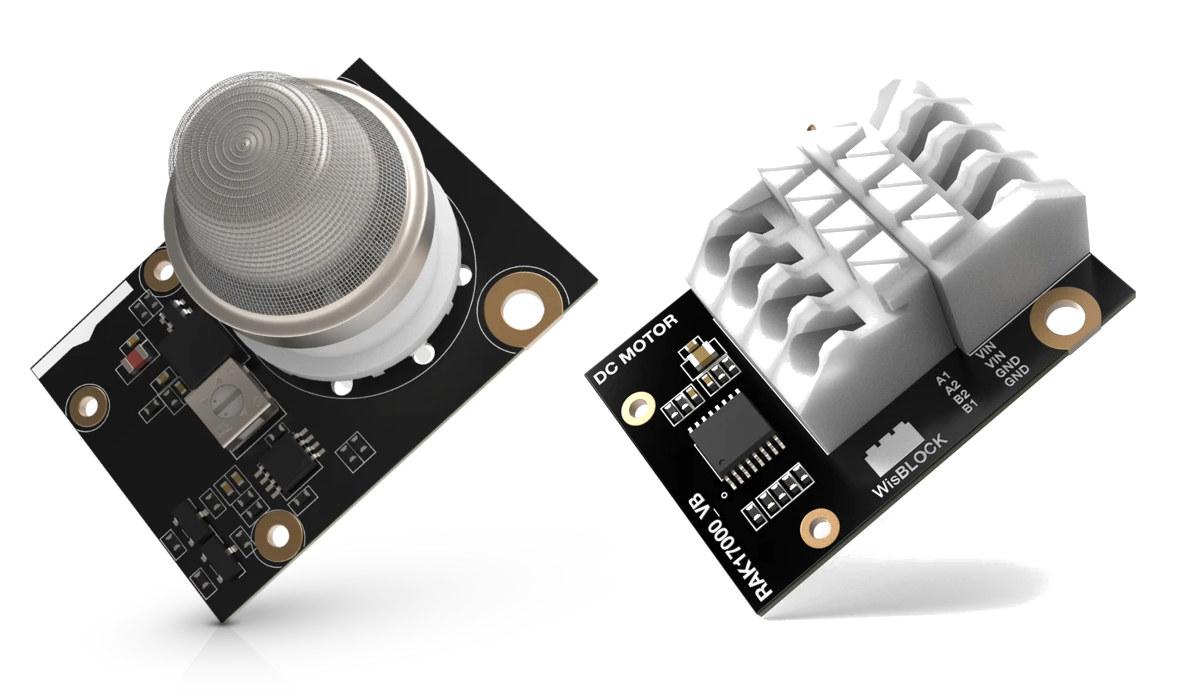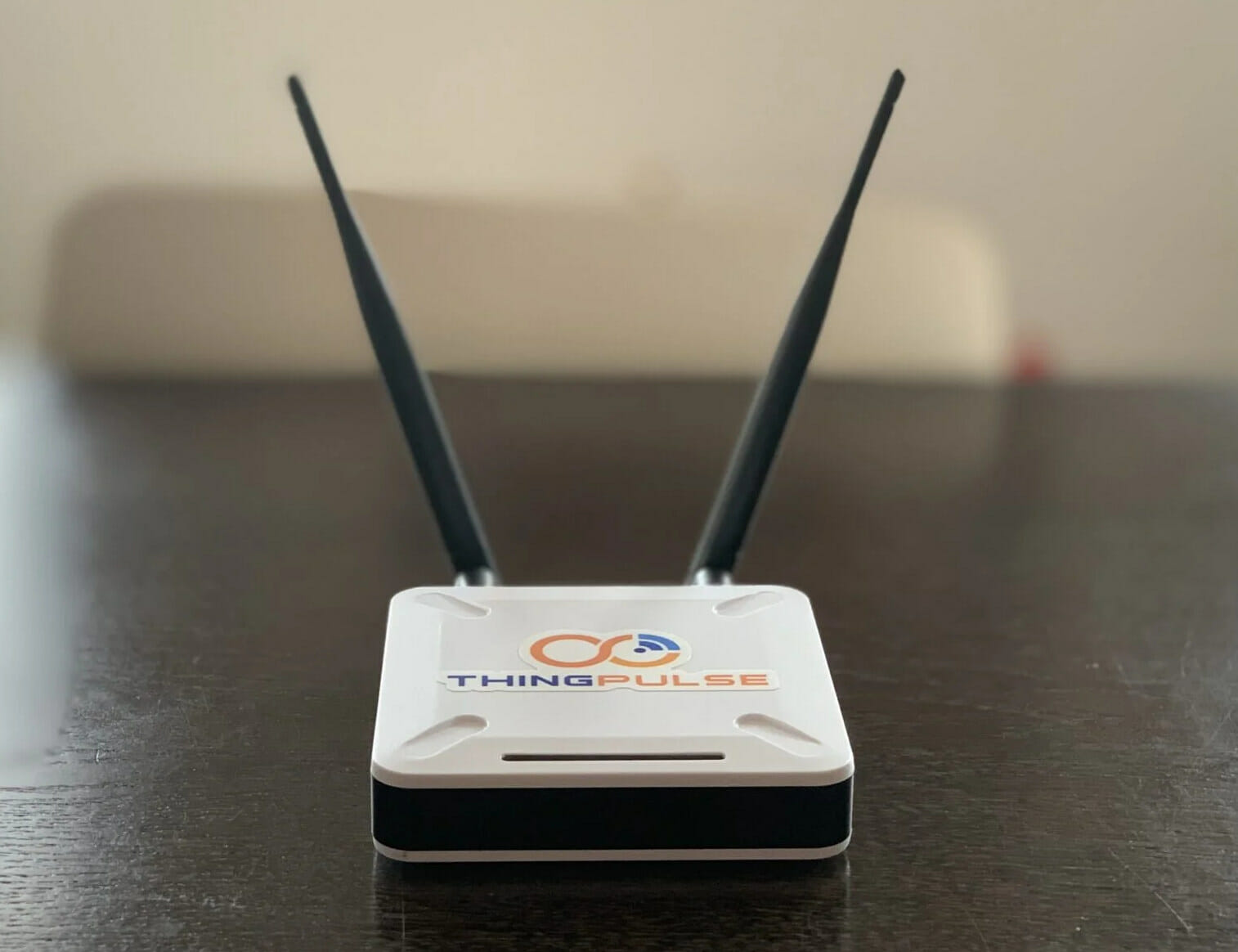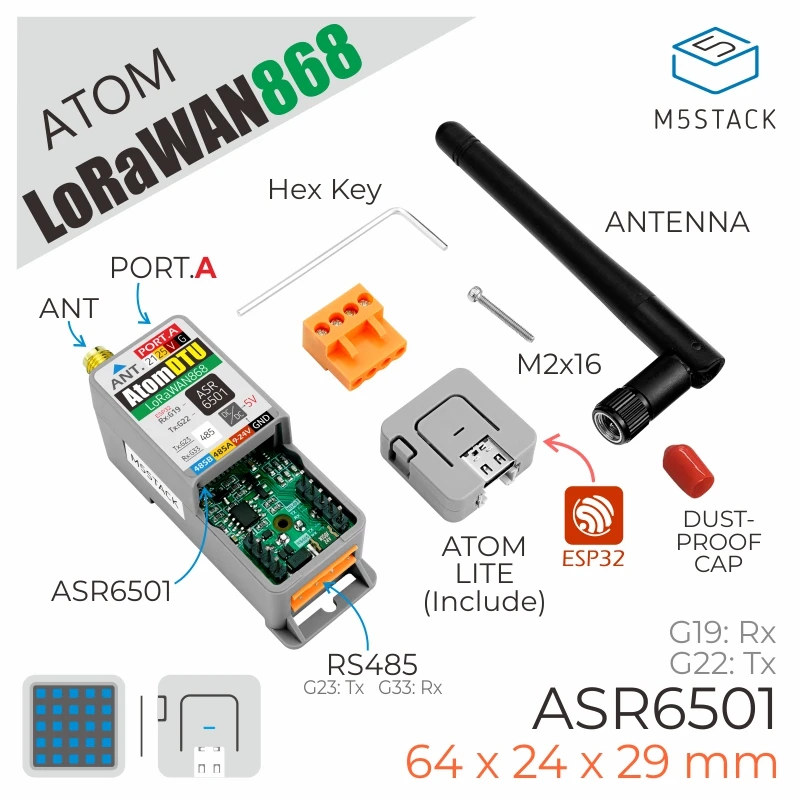Around two years ago, we noted beta Marlin 2.0 support for ESP32 and some initiatives to create ESP32 powered 3D printer controller boards with built-in WiFi connectivity. Now Marlin 2.0 firmware officially supports ESP32 boards such as FYSETC E4, E4d@BOX, or MRR ESPA. Another ESP32 based 3D printer controller board has now been brought to my attention. PandaZhu supports up to eight motor drivers, up to three heaters, up to three thermistors, one external LCD display, and on the software-side, the board is compatible with Marlin 2.0 as well as ESP3D WebUI. PandaZhu board’s specifications: Wireless module – ESP32-WROOM-32 based on Espressif ESP32 dual-core Xtensa processor @ 240MHz with 520 KB SRAM, plus 4MB flash Connectivity – 802.11b/g/n up to 150 Mbps, Bluetooth 4.2 3D printer peripherals Up to 8x motor drivers Up to 3x heaters Up to 3x thermistors with 30°C to 250°C range, BLTouch auto-leveling sensor with a […]
Linux 5.0 shown to boot on ESP32 processor
ESP32 IoT processor supports up to 8MB PSRAM which makes it just enough to run a minimal version of Linux. There’s little practical application for it, but it may be fun to try, and one developer apparently managed to boot Linux 5.0.0 on a board with an ESP32 dual-core Xtensa processor connected to 8MB PSRAM and a 2MB SPI flash. The shortened boot log above shown the bootloader output with ESP32-D0WD dual-core Xtensa processor eventually booting Linux 5.0.0. But the boot process is somewhat convoluted as the bootloader jumps to “Juice Vm” described as a “small RISC-V virtual machine” which then calls OpenSBI RISC-V Open Source Supervisor Binary Interface which loads the Linux kernel and a small file system. The full boot log and binary images were shared on a Reddit thread and Whycan with the latter in Chinese. The total image size is around 1.5 MB that almost entirely […]
ESP32-C3 board comes with 16340 battery holder, D1 mini compatibility
It looks like ESP32-C3 floodgates have opened. We’ve just written about several NodeMCU ESP32-C3 boards, and now there’s another board with the RISC-V WiFI & Bluetooth processor. Meet LilyGo TTGO T-OI PLUS equipped with a 16340 battery holder. Getting a battery-powered ESP32-C3 board could prove to be very interesting as ESP32-C3 power consumption is much lower than ESP8266 and ESP32, notably in deep sleep mode, where the RISC-V processor consumes just 5uA, against 20 uA for ESP8266 and ESP32, and the difference is even greater in light sleep mode (ESP8266: 2000 uA vs ESP32-C3: 130 uA). LilyGo TTGO T-OI PLUS specifications: SoC – Espressif Systems ESP32-C3 single-core RISC-V processor @ 160 MHz with 2.4 GHz WiFi, Bluetooth 5.0 LE Storage – TBD flash (probably 2MB or 4MB) Antenna – Ceramic antenna and IPEX connector USB – USB-C port for power and programming Expansion 2x 8-pin headers with 12x GPIO, 1x […]
XUAN-Bike self-balancing, self-riding bicycle relies on flywheel, 22 TOPS Huawei Ascend A310 AI processor
After Huawei engineer Peng Zhihui Jun fell off this bicycle, he decided he should create a self-balancing, self-riding bicycle, and ultimately this gave birth to the XUAN-Bike, with XUAN standing for eXtremely, Unnatural Auto-Navigation, and also happening to be an old Chinese name for cars. The bicycle relies on a flywheel and a control board with ESP32 and MPU6050 IMU for stabilization connected over a CAN bus to the motors, as well as Atlas 200 DK AI Developer Kit equipped with the 22 TOPS Huawei Ascend A310 AI processor consuming under 8W connected to a 3D depth camera and motor for self-riding. It’s not the first time we see this type of bicycle or even motorcycle, but the XUAN-Bike design is also fairly well-documented with the hardware design (electronics + 3D Fusion360 CAD files) and some documentation in Chinese uploaded to Github. The software part has not been released so […]
NodeMCU ESP32-C3 WiFi & BLE IoT boards show up for about $4
ESP32-C3 RISC-V IoT processor with 2.4 WiFI and Bluetooth LE 5.0 was unveiled in December 2020, and Espressif Systems’ own ESP32-C3-DevKitM-1 board has been available in limited quantities as an “engineering sample”. But now I’ve noticed third-party NodeMCU ESP32-C3 boards are being sold on Aliexpress for around $4 with ESP32-C3S_Kit and ESP-C3-01M-Kit both based on AI Thinker ESP32-C3 modules announced a few months ago. NodeMCU ESP32-C3S_KIt Specifications: Wireless module – AI Thinker ESP32-C3S (footprint compatible with ESP32-S / ESP32-WROOM-32D) with ESP32-C3 RISC-V processor @ 160 MHz, 2.4 GHz WiFi, Bluetooth 5.0 LE, 4MB flash, on-board PCB antenna, and IPEX connector (which may be soldered or not). USB – Micro USB port for power and programming via CH340C USB to TTL chip Expansion – 2x 15-pin headers with GPIO, SPI, UART, ADC, I2S, 3.3V, GND Misc – RGB LED, Reset key, user-programmable key Dimensions – 49 x 26 mm ESP32-C3S_Kit is […]
RAKwireless announces 14 new WisBlock modules for IoT prototyping
Rakwireless has added 14 new Wisblock modules to the WisBlock IoT modular system introduced last year, plans to soon release a Raspberry Pi RP2040 based LoRaWAN Wisblock Core module, and will give away some Wisblock starter kits this week. As a reminder WisBlock IoT modular system is comprised of four block types: WisBlock Base – A carrier board with connectors for other block types, power supply, some ports WisBlock Core – Module with a microcontroller/processor WisBlock Sensor – Modules with environmental sensors, motion sensors, ambient light sensors, or others WisBlock IO – Adds more inputs, outputs, or connectivity options including LTE-M / NB-IoT, cellular and Wi-Fi modules, NFC reader, and interfaces for I2C, UART, ADC, and GPIO. New WisBlock IO and Sensor modules Some modules are available right now, while others have been announced, but just coming soon Here’s a list of the 10 modules available now: RAK12002 – RTC […]
ThingPulse ESPGateway features not one, but two ESP32 wireless modules
ThingPulse ESPGateway is a WiFi and Bluetooth gateway equipped with two ESP32 modules, two external antennas, and a footprint for an RN2483 LoRaWAN chip. The two ESP32-WROVER modules communicate over UART, and this design allows one ESP32 to transmit data over WiFi or Bluetooth, while the other remains in promiscuous mode, or transmits data using ESPNow low-power proprietary protocol for applications we’ll discuss below. ESPGateway hardware specifications: Wireless connectivity 2x ESP32-WROVER-IB modules with dual-core ESP32 processor, 4MB flash, and 8MB PSRAM Footprint for RN2483 LoRaWAN module connected to one of the ESP32 module 2x external antennas for longer range Expansion – Unpopulated headers to access to 18 GPIO pins, 3.3V, and GND to add sensors, displays, actuators… Debugging – USB-C port for serial console connected to one CP2104 USB to TTL chip plus switch to select ESP1/ESP2 module Misc – 4x WS2812B programmable LEDs, Reset button ThingPulse explains in more […]
M5Stack Atom DTU LoRaWAN Kit also supports WiFi, RS485, Modbus communication
M5Stack is known for its ESP32 based building blocks for the IoT with WiFi & Bluetooth wireless connectivity, I/O headers, and block-specific features like a tiny color display, a speaker, a touchscreen display, a camera, and more. The company’s latest product is the M5Stack Atom DTU LoRaWAN Kit based on ESP32 ATOM Lite, as well as ASR Micro ASR6501 LoRa module (SX1302 based) and one RS485 header that allows for industrial communication notably with the Modbus protocol. M5Stack Atom DTU LoRaWAN Kit specifications: Wireless connectivity M5Stack ATOM Lite with ESP32 WiFi 4 and Bluetooth 4.2/5.x dual-core SoC ASR ASR6501 LoRa chip Operating frequency – 868MHz or 915 MHz Transmit power – Up to +21dBm RX sensitivity – Up to -137dBm (SF=12/BW=125KHz) Serial communication – UART 115200bps (AT command) via ESP32 Antenna – SMA antenna connector Power consumption @ 3.3V (from ASR6501 datasheet) Tx @ +21dBm – 106 mA Rx – […]


